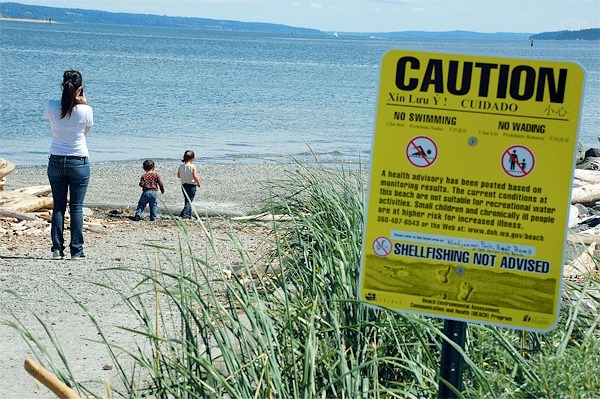A recent discovery on Oak Harbor’s waterfront has made a longtime headache for the city a whole lot bigger.
Plans have been in the works to replace and reroute a 42-inch stormwater outfall at Windjammer Park since the mid-1990s, but the project was continually delayed for budget reasons. Recent utility hikes, however, will provide the needed funds and it looked as if the project was finally going to get done this summer.
But those plans may once again have to wait.
Jumping through the hoops required for state and federal permits, the city hired an archeologist to evaluate the site this past December. Her findings were not what city officials had been hoping for.
“Unfortunately, artifacts were found,” said Oak Harbor Project Engineer Arnie Peterschmidt, to several city council members at Jan. 6 Public Works Standing Committee meeting.
The archeologist, Brandy Rinck of Seattle-based Northwest Archeology Associates, reportedly found remains of burned wood and animal bones, which could be evidence of an early Native American site.
Rinck declined to comment on what she discovered or the exact location of the site, as federal and state laws designed to protect culturally significant resources prohibit the dissemination of such information. Looters can face hefty crimes and even face time in jail, she said.
The outfall has long been a problem for the city. The metal pipe is degrading and during high tides and heavy rains, it has a tendency to backup and flood drains at the intersection of Highway 20, Pioneer Way, and Beeksma Drive.
According to Peterschmidt, it’s been a common source of complaints by business owners in the area.
It’s also been the cause of pollution in Oak Harbor bay. This past summer, the beach by the outfall was closed after water quality samples revealed the presence of the fecal bacteria Enterococcus. It was closed for the same reason in 2007.
Fecal coliform is the bacteria found in the feces of living things. It’s not necessarily dangerous by itself but it can be a marker for other harmful pathogens that can lead to dysentery or even typhoid fever.
Most agree that the Enterococcus at Windjammer Park is the result of heavy rains. Any animal feces or matter from a failing septic system gets washed down storm drains and eventually makes it into the bay.
The idea is to replace the end of the pipe, which was rusted away to little more than a stub, and place it next to another storm water outfall. Together, they would extend far into the bay in the hopes that the discharge would mix with tidal currents and not concentrate along the beach, causing closures.
However, the discovery of a possible Native American site spells bad news for the long-needed project. Not only could it push back a start date until at least 2012, but it could balloon the estimated $900,000 price tag.
City Engineer Eric Johnston could not say by how much, however. One option would be for the city to fund an extensive archeological dig but it could prove an expensive risk.
“We could spend all that money only to find out ‘Yes,’ it is culturally significant and not be able to do the project,” Johnston said.
Another possibility is to keep the pipe where it is and rebuild it there. However, that also would require archeological exploration and the fear is that culturally significant artifacts may be found there too.
In fact, while development is nothing new to the area, the recent discovery may have long range impacts on other city projects, such as eliminating a potential site for the new wastewater treatment plant.
“It has implications on any part of the waterfront,” Peterschmidt said.
According to Johnston, either option does not afford the city enough time to meet its permit construction window of July 15 to Sept. 15. While other alternatives may be brought forward, in all likelihood hood the project will be delayed by at least one year, he said.



